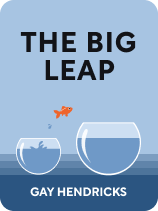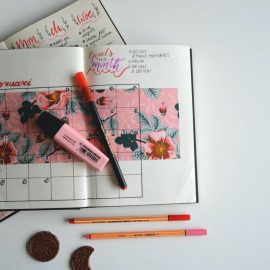

This article is an excerpt from the Shortform book guide to "The Big Leap" by Gay Hendricks. Shortform has the world's best summaries and analyses of books you should be reading.
Like this article? Sign up for a free trial here .
Do you often worry unnecessarily? How does useless worry compromise your success and happiness?
Unnecessary worry is a common self-sabotaging habit. It hinders your progress by undermining your confidence and keeping you from focusing on more productive, positive things.
Here’s how to put an end to the cycle of useless worrying.
Worry Is Useless
Worry can be useful or not useful. If there’s a real and present issue that you can solve, then solve it, and move on. For example, if you’re worried that you may have forgotten to pay your phone bill this month, check your records to see if it’s been paid. If not, take care of it—then that worry is gone. However, if solving your present concern is not realistic and/or the issue isn’t something you can do anything about, then worrying about it is useless. For example, if you’re worried that you might not get a promotion you’ve applied for, but you’ve already done everything you can do to put that in motion, then there’s no reason to keep thinking about it.
Since unnecessary worry is a habitual thought pattern, Hendricks advises that addressing this behavior must involve learning to redirect your thoughts to get out of that habitual pattern. When you catch yourself worrying, stop and ask whether it’s useful or not. If it’s not, acknowledge that and redirect your thoughts toward something useful. But ceasing the worry habit isn’t sufficient in itself. Hendricks points out that you must also determine what positive energy or success you may be trying to block by engaging in this negative thought pattern. Therefore, rather than just redirecting your thoughts, also take the time to look for what triggered it.
Hendricks points out that worry and anxiety are fear-based, and he makes a connection between the feelings of fear and excitement. He points out that when faced with the unknown, humans experience either fear (a negative reaction) or excitement (a positive reaction). Therefore, he argues, these two emotions are just different ways of reacting to fear, and therefore we can learn to transform our fear into excitement by breathing through the fear. Consciously breathing deeply during fearful moments can release the negativity, and thus change the feeling into a more pleasant sensation of excitement or wonder.
How to Stop Dwelling on Unnecessary Worry
How to Stop Worrying and Start Living gives some specific advice for analyzing your worries to determine how to resolve those ones you can take action on. The process involves three steps:
1. Write down what you’re worrying about, describing in detail all of the information related to this worry. This helps you get clear on what the heart of the anxiety is.
2. Read over all of the information you’ve written down and then think about what you might be able to do to resolve the situation. Write down all the possible solutions you can think of, and then decide which solution seems to be the best one.
3. Take immediate action to implement that solution. Don’t hesitate or delay as this will only prolong the worry.
For worries that you can’t do anything about, simply “letting them go” may be easier said than done. If you need some extra help with these, there are a number of apps that can help you track and assess your negative habits, reduce habitual worrying, and effectively manage your anxiety. In order to address your chronic worry habit, you may want to try one of the apps here.

———End of Preview———
Like what you just read? Read the rest of the world's best book summary and analysis of Gay Hendricks's "The Big Leap" at Shortform .
Here's what you'll find in our full The Big Leap summary :
- How to overcome the psychological barriers to success and fulfillment
- Why most people have a self-imposed limit to happiness
- How to identify your own false beliefs and stop self-sabotaging






